5 Ways to Use Pastel Plantings in Contemporary Gardens
http://decor-ideas.org 07/26/2015 23:13 Decor Ideas
Pastel colors can enhance outdoor spaces and add a sense of tranquility and lightness, even in starker contemporary gardens. Used in informal plantings, pastel tones such as pink, lilac, lavender, cream and peach create soft and subtle effects. Though they work well on their own, pastels also combine well with gray and silver foliage as well as bolder colors, creating lively contemporary gardens with ties to cottage gardens of the past.
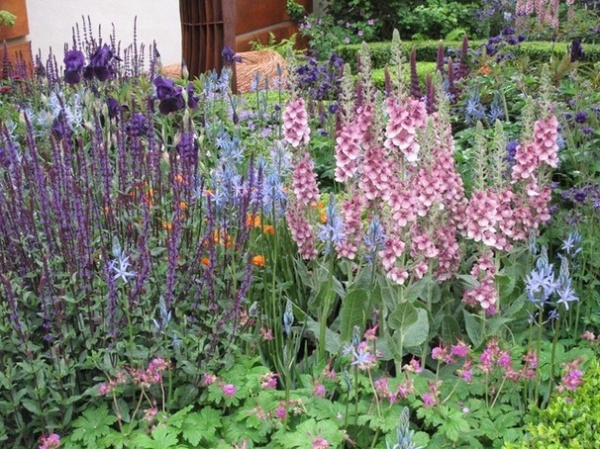
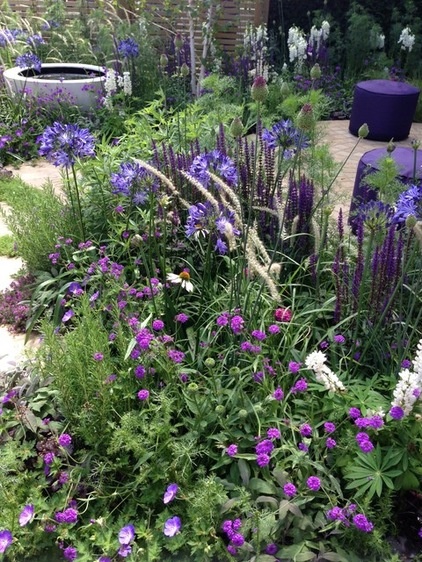
1. Plant in a matrix. Matrix planting is a technique that replicates nature in the way that plants grow together and intermingle, usually with a dominant species punctuating the scheme. Pastel-colored flowers blend well in this style of planting, and stronger-colored flowers can be used to add bursts of interest.
We saw this style of planting softening contemporary show gardens this year at the RHS Chelsea Flower Show, in May, and with The Wellbeing of Women garden at this year’s RHS Hampton Court Palace Flower Show, as seen here.
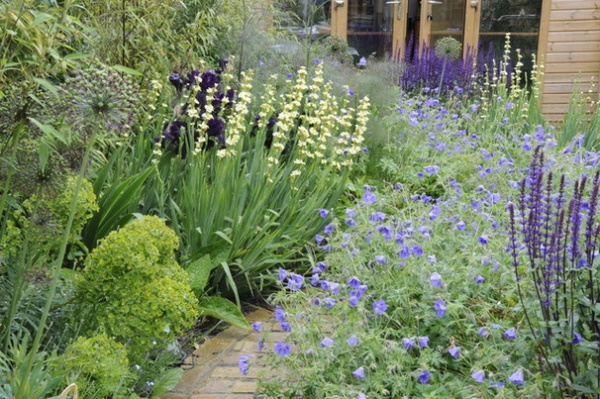
Dark blue German iris (Iris germanica) and deep blue spires of the sage (Salvia sp.) bring this informal border of pale blue hardy geraniums (Geranium sp.) to life. Dark colors of similar tones intermixed in the matrix go well with pastels.
The creamy pale yellow-eyed grass (Sisyrinchium striatum) adds height and architectural structure to the planting. Care has been taken to use a flower of the same total intensity as the rest of the planting, to create a restful design.
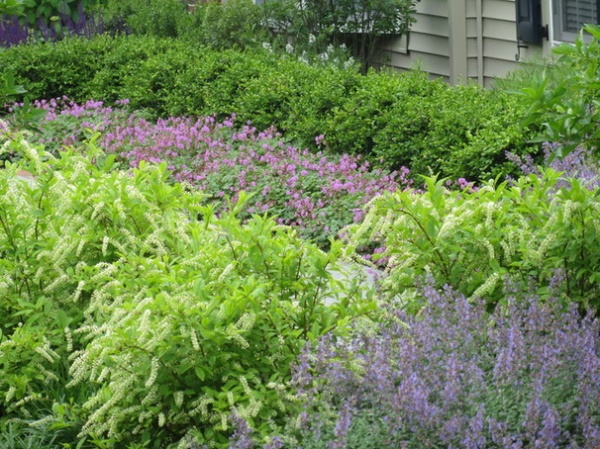
2. Frame pastels with evergreens. Evergreen foliage is a fitting backdrop to a pastel planting palette. Here, the dusty blue of catmint (Nepeta x faassenii) and soft pink of hardy geranium stand against the dark green of boxwood (Buxus sp.), while the creamy flowers of Virginia sweetspire (Itea virginica) blend in and complete the scheme.
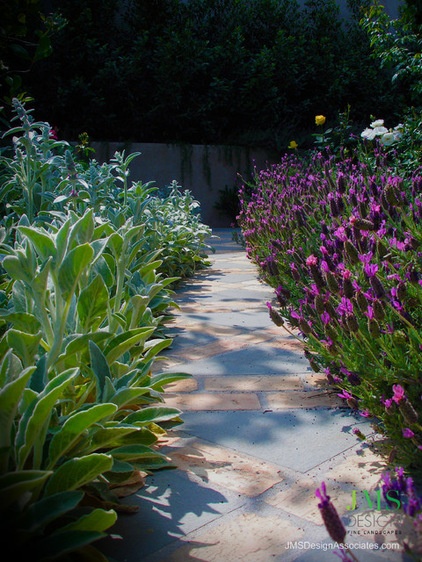
3. Add silver and gray as foils. Silver foliage combines splendidly with pastels, especially blues, pinks and purples. The French lavender (Lavandula stoechas) and lamb’s ear (Stachys byzantina) lining this path complement each other across the walkway.
Discover more plants with blue and gray foliage
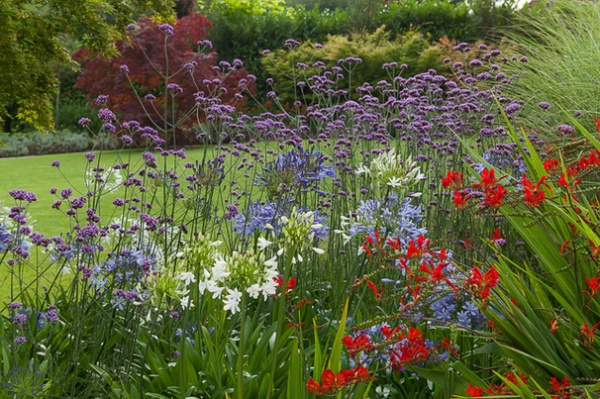
4. Mix bolder colors to add depth. This planting could have been a little too flat had it only consisted of a pastel palette of blue and white agapanthus and purple tall verbena (Verbena bonariensis), but the burst of bright red Crocosmia ‘Lucifer’ adds contrast to the whole scene. The strong red also helps the quieter pastel colors recede, giving the planting more depth.
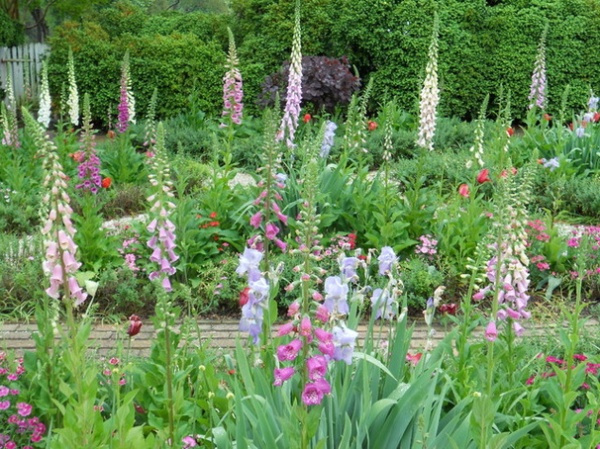
5. Take pastels to a higher level. Foxgloves, though originally hedgerow plants, have been a favorite in cottage gardens for many years. Their bold architectural spires add height to pastel plantings.
The Victorian gardener Gertrude Jekyll loved foxgloves and popularized the white foxglove (Digitalis purpurea f. albiflora). She used it as an essential ingredient in her white planting schemes, and it is now an important plant in our pastel palette.
There is now a wide range of foxglove varieties and color hues, allowing gardeners to create pastel plantings of many layers.
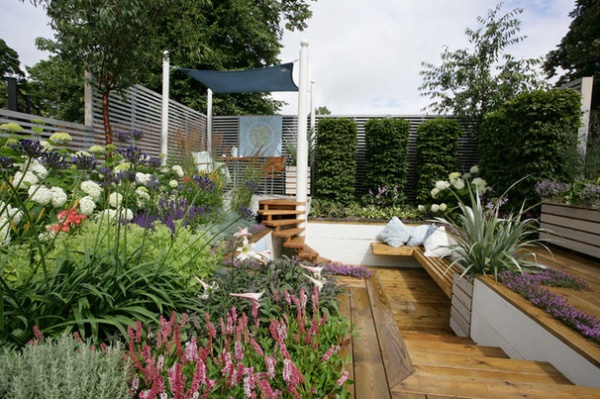
The raised beds in this urban garden are almost overplanted with a mixture of tonal pastel plants, blended with the aid of low-growing foliage ground covers, including common sage (Salvia officinalis ‘Purpurascens’) and lavender cotton (Santolina chamaecyparissus).
The success in this garden lies in how the designers linked the planting with the hardscape, using touches of white flowering plants to match the white fencing and sides of the raised beds.
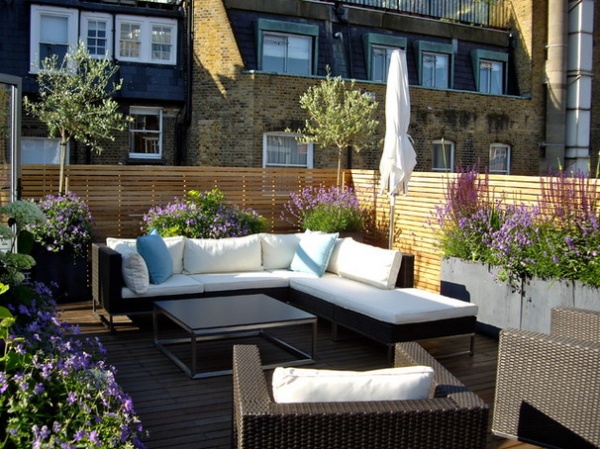
Pastel-colored plants are combined to create a colorful yet calming atmosphere in this small roof garden. The gray containers and silver-foliage olive trees are the perfect foil for the blue flower theme, composed of lavender (Lavandula sp.), sage (Salvia x superba) and violets (Viola cornuta). A few outdoor pillows in powder blue link the seating with the plantings as a final touch.
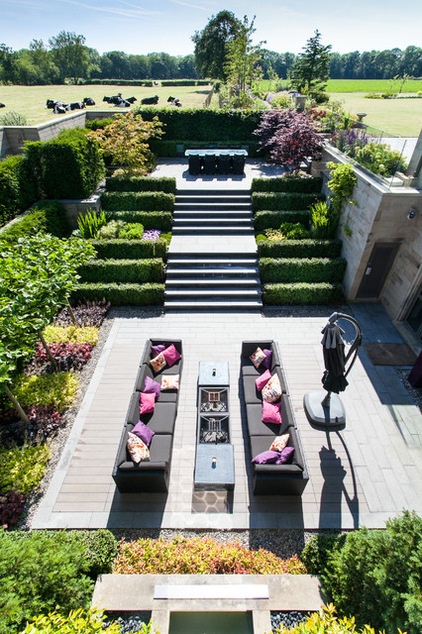
This contemporary design, though more formal than the other examples, incorporates touches of pastel. The pink, lilac and purple outdoor pillows tie in with the pastel colors in the plantings.
More: Discover more planting ideas for your garden
Related Articles Recommended












